
steiners-incredible-india-2024
vakantio.de/steiners-incredible-india-2024
BLOG 15: Jodhpur - Highlight in Rajasthan (Part 2: Old Town & Market)
Ippubblikat: 17.03.2024








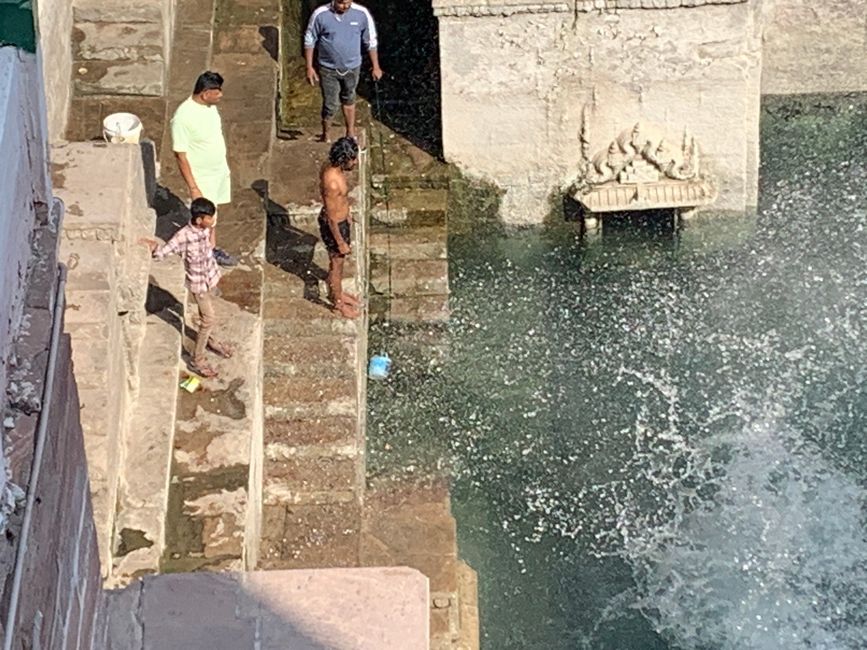









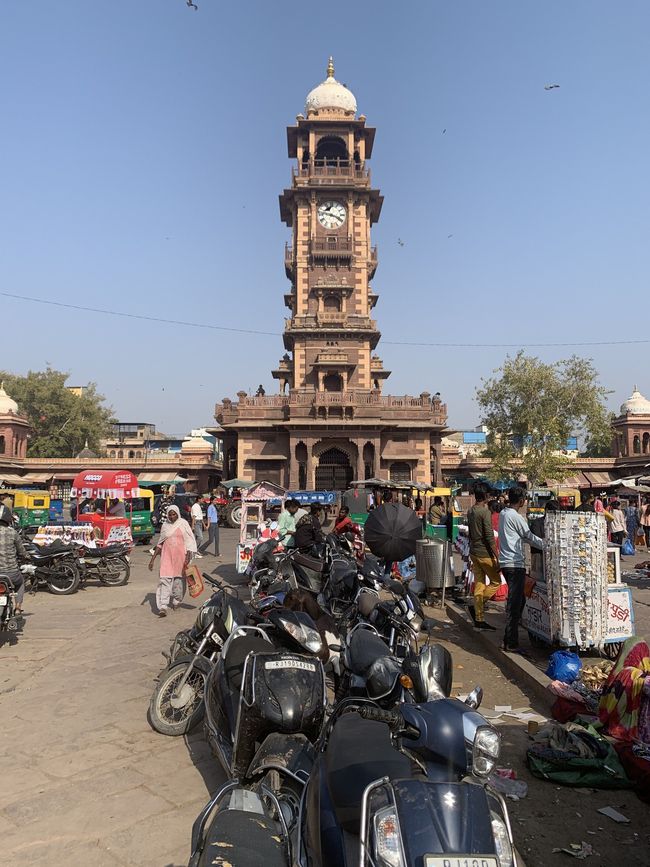





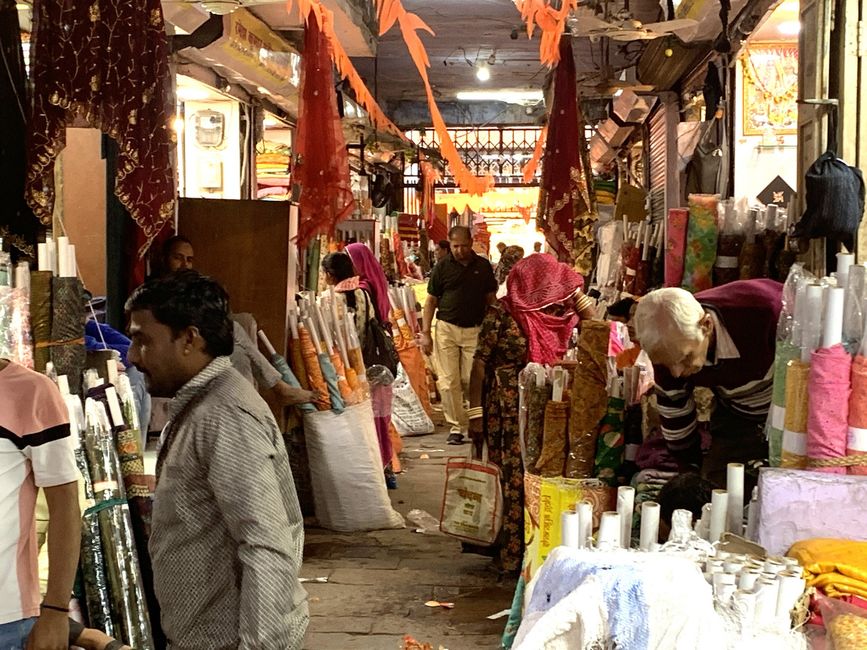
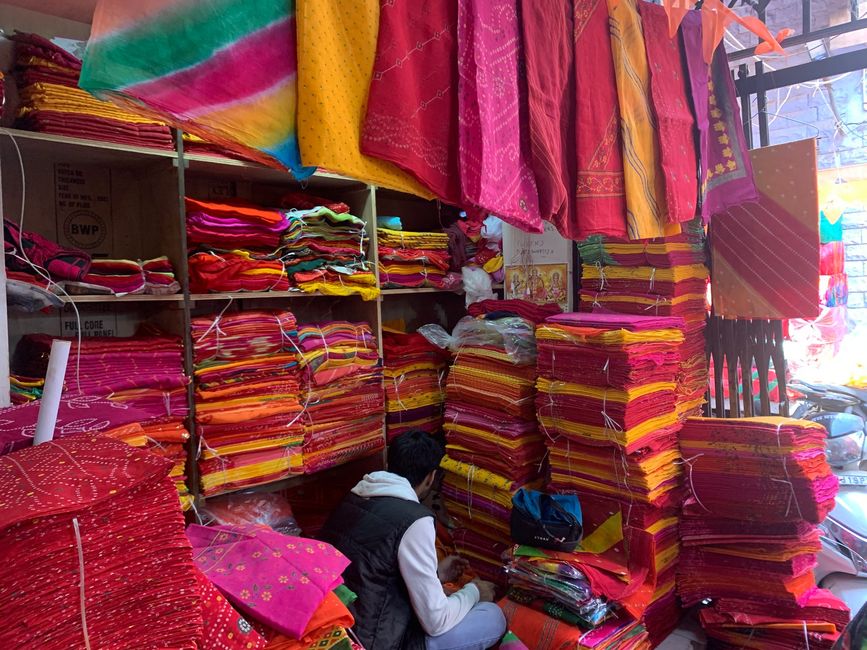
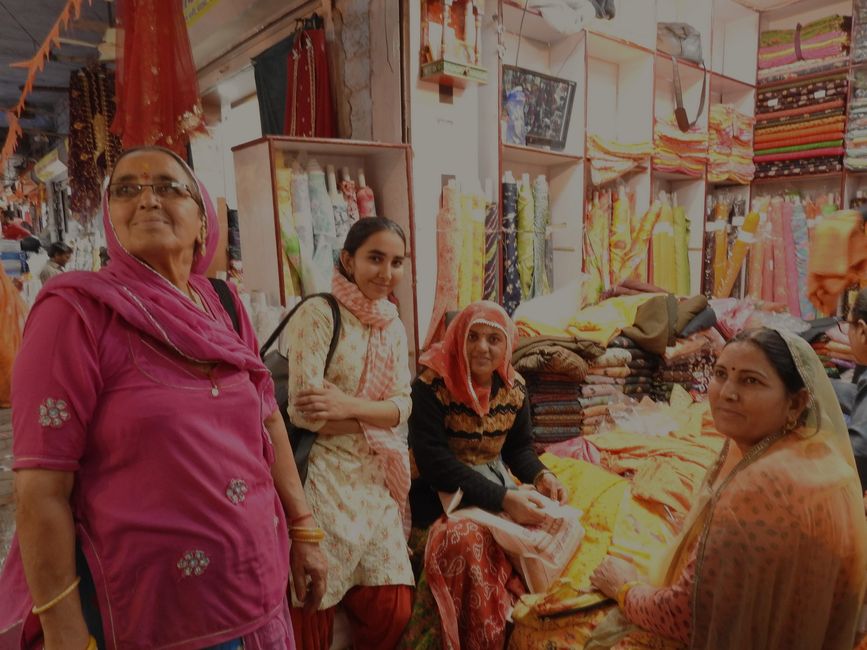










Abbona għan-Newsletter
Now we go down from the fort hill to the old town of Jodhpur. Our local guide, who is excellent by the way, leads our driver into the narrowest alleys in the old town. At the exit point we ask ourselves, why here? We go around a few corners and stairs and suddenly “a big hole” opens up in front of us, a three-hundred-year-old stepwell, the Toorji ka Jhalra. The guide takes us to the “Stepwell Cafe”, where we not only have an excellent view, but can also enjoy delicious vegetarian Indian cuisine and a Kingfisher beer.
It is an ancient stepwell modeled on the “Bawri” of Gujarat. There are still three of them in Jodhpur today, which are staggered so that one after the other can fill up in the monsoon season. This holds water up to a depth of almost 100 meters and has steps that lead down to the respective water level. The stepwell was built in 1740 AD by a queen of Marwar - Raani Tawarji, consort of Maharaja Abhay Singh of Jodhpur - and is similar to those from the queen's home kingdom in Patan, Gujarat. At the moment it still has a water level of around 30 m - towards the end of the dry season.
The walls of the stepwell are crafted from Jodhpur's distinctive pink sandstone in Rajput architecture and decorated with figures of dancing elephants, medieval lions and cows and niches with sculptures of deities worshiped at the time. Completely forgotten for over a century, the stepwell was carefully restored to its former glory not long ago.
Stepwells ensured water availability during the annual dry season and served as a permanent source of water in desert areas. Women from the villages often visited the “Bawris” to draw water from the well using the Persian wheel. Clad in stone, the “baoris” provided a respite from the desert sun and became a place for villagers’ cultural gatherings.
After this rest in a quiet corner, we walk through a few alleys into the very lively “Sardar Market” - the entrance gate bears the inscription “Sardar Market Girdikot” - Girdikot is very aptly translated in English as “crowded gate”. In the narrow streets there is a colorful life - one could also say "chaos" - of locals, a few tourists, mopeds and tuk-tuks. They all share the little space between the small shops where you can buy clothing, fruit and vegetables, incense sticks, spices and and and... can buy.
After this deep immersion in the colorful and very lively India, we enjoy a sundowner drink by the pool in the quiet of our wonderful hotel in the evening and reflect on the many, many impressions of today.
-------------------------------------------------- -------------------------------------------------- ---
Now we drive down from the fort hill to the old town of Jodhpur. Our local guide, who is excellent by the way, leads our driver into the narrowest alleys in the old town. At the exit point we ask ourselves, why here? We walk around a few corners and stairs and suddenly “a big hole” opens up in front of us, a three-hundred-year-old stepwell, the Toorji ka Jhalra. The guide takes us to the “Stepwell Cafe”, where we not only have an excellent view, but can also enjoy delicious vegetarian Indian cuisine and a Kingfisher beer.
It is an ancient stepwell modeled on the “Bawri” of Gujarat. There are still three of them in Jodhpur today, which are staggered so that one after the other can fill up in the monsoon season. This one holds water up to a depth of almost 100 meters and has steps that lead down to the respective water level. The stepwell was built in 1740 AD by a queen of Marwar - Raani Tawarji, consort of Maharaja Abhay Singh of Jodhpur - and is similar to those from the queen's home kingdom in Patan, Gujarat. At the moment it still has a water level of around 30 m - towards the end of the dry season.
The walls of the stepwell are crafted from Jodhpur's distinctive pink sandstone in Rajput architecture and decorated with figures of dancing elephants, medieval lions and cows and niches with sculptures of deities worshiped at the time. Completely forgotten for over a century, the stepwell was carefully restored to its former glory not long ago.
Stepwells ensured water availability during the annual dry season and served as a permanent source of water in desert areas. Women from the villages often visited the “Bawris” to draw water from the well using the Persian wheel. Clad in stone, the “baoris” provided a respite from the desert sun and became a place for villagers' cultural gatherings.
After this rest in a quiet corner, we walk through a few alleys into the very lively “Sardar Market” - the entrance gate bears the inscription “Sardar Market Girdikot” - Girdikot is very aptly translated in English as “crowded gate”. In the narrow streets there is a colorful life - one could also say "chaos" - of locals, a few tourists, motor cycles and tuk-tuks. They all share the little space between the small shops where you can buy clothing, fruit and vegetables, incense sticks, spices and and and...
After this deep immersion in the colorful and very lively India, we enjoy a sundowner drink by the pool in the quietness of our wonderful hotel in the evening and reflect on the many, many impressions of today.
Abbona għan-Newsletter
Tweġiba

Rapporti tal-ivvjaġġar L-Indja
